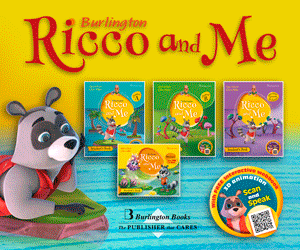Teleporting, flying cars and Back To The Future style hover-boards. These have all been promised to us within the next few years, but there is little hope of seeing them any time soon. These far-fetched technologies fill us with excitement about what the future may hold, inspiring generations of dreamers to learn math, science and engineering.
But what about the technologies that will help these aspiring inventors, scientists and engineers learn? What does the future hold for our classrooms, and what kinds of technologies will shape the minds of our children's children?
Here are five future technologies that will completely change the learning space and revolutionize the techniques we use within it.
Biometrics
Biometrics is the technology used to recognize humans based on specific physical or behavioral traits. In the future, this technology will help intelligent software completely understand the physical and emotional state of children learning in the classroom. Course material presented to students can be altered on the fly and will be perfectly tailored to individual needs based on biometric signals from students. Physical traits such as facial expression, heart rate, skin moisture and even odor can be used to create detailed reports of student understanding and performance.
Behavioral signs such as typing rhythm, gait and voice can let teachers know when students are in need of additional assistance as well as help them understand what teaching techniques work best for individual students.
Augmented Reality Eye-Wear
With rumors of Google releasing Augmented Reality (AR) glasses by the end of the year, this technology may be closer than we think. AR is essentially the layering of further data on top of the reality we already see. Whether students are wearing Oakley THUMP style glasses or having data sent straight to their AR contact lenses, the educational implications for this technology are huge. We talk about rich media being available in digital textbooks, but imagine having an AR Benjamin Franklin sitting at your desk explaining the Declaration of Independence. The immersive experience that students will enjoy both in and outside the classroom will be amazing.
Multi-Touch Surfaces
Companies such as Microsoft have been working on multi-touch surfaces for many years now. Although they have done amazing things, it has only been since the massive success of Apple's iPhone that the concept of multi-touch has been embraced by mainstream consumers. As touch surfaces become cheaper and more advanced, we are seeing early concepts of multi-touch products that will one day change the classroom. A video of the EXOdesk below shows how the whole work surface can be manipulated with real-time data and altered for completely different purposes. Imagine a workspace where students are collaborating live with peers around the world, manipulating virtual objects right in front of them. Streamed video, virtual tools and millions of online resources available with a single swipe of the desk.
Electroencephalography
A mouthful to pronounce, electroencephalography (EEG) is the recording of electrical activity along the scalp to measure brain activity. In a similar manner to biometrics, the technology can be used to understand how students' minds are processing material and concepts. Although current technologies allow us to use EEG in education, the price and practicalities of the technology are still restrictive. Working with software, EEG could be used to highlight when students show signs of confusion, adjusting courseware to remediate until signs of full understanding are shown. Trends and analytics collected will help educational content creators understand what materials are most effective and engaging so they can continue to improve the quality given to students.
Holographic Displays
Another technology promised by Hollywood, in particular the Star Wars Trilogy, is holographic displays. In education, this could revolutionize distance learning as well as provide a completely different space for simulation and experimentation. Students could recreate holographic scenarios, such as science experiments or scaled models, that may be too expensive or dangerous to put together in the classroom. Research from Microsoft shows an early stage holographic display called HoloDesk (see video below), where not only is it possible to view holographic images, it is also possible to interact with the 3D models. This type of technology could offer great educational value as well as helping younger students develop and master motor skills.
Yes, the future sounds exciting . . . and scary. Electrodes on our children as they study? Monitoring their scent for signs of distress? These are far-fetched concepts and in truth could only ever be implemented with strict guidelines, care and understanding.
In ten years time, will I be comfortable with subliminal data being collected from children as they learn? No, absolutely not. But ten years ago I would have said there was no way I would upload my private videos for the world to see, or freely enter my personal information into a giant online database.
I guess only time will tell, and until then, I will continue hoping for that long awaited hover-board.
Nick Grantham
edutopia.org
"Originally published (publication date 10/4/12 ) © Edutopia.org; The George Lucas Educational Foundation."




